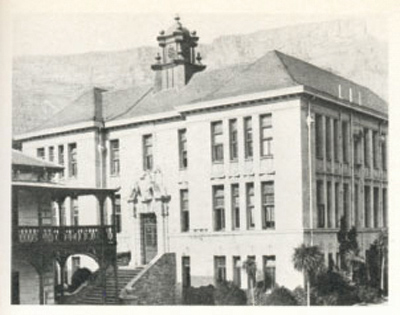
This unique group of buildings known as the Groote Schuur campus of the University of Cape Town, was built in the classical revival style and together with its open spaces constitutes the original campus as designed by architect JM Solomon in 1918. A number of important structures on the property inherited from previous eras include the Belvedere, also known as the Summer House, which was built originally by the Dutch East India Company on the Rustenburg Estate. The building was restored by Herbert Baker in 1894, at which stage it formed the focal point of an avenue of trees running up the hillside from Rustenburg House and which, at the instigation of Cecil John Rhodes, was replanted with plumbago japonica, jacaranda and turkey oaks. A part of it, known as Japonica Walk, survives to the present day. A second building known as The Woolsack, is an interesting blend of Cape Dutch and neoclassical features, and was rebuilt by Herbert Baker under instruction from Cecil John Rhodes, for the use of poets and artists. From 1900 to 1907 it was the home of Rudyard Kipling and his family who stayed here during the summer months. The property was transferred to the university in 1980. It was declared a National Monument under old NMC legislation on 21 September 1979. The oldest medical school in South Africa, offer a variety of educational, training and academic career options within the context of health care and research - from clinical and public health to health and rehabilitation sciences. Hiddingh Campus, UCT's original "home", the Hiddingh campus now houses the University's Drama School, the Michaelis School of Fine Art and the Little Theatre, among other activities and facilities.